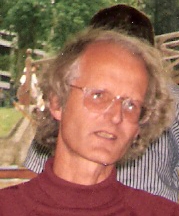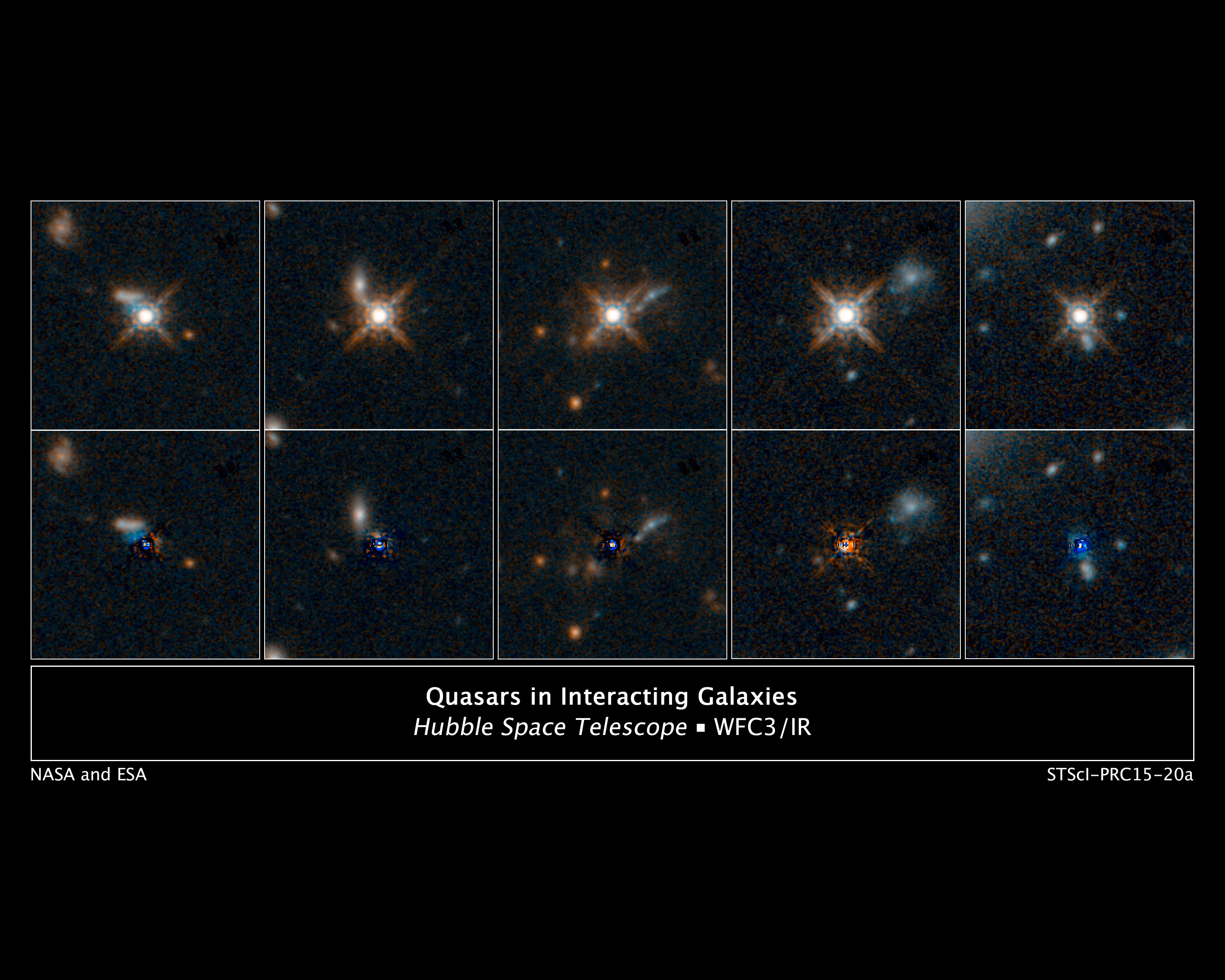|
Chang–Refsdal Lens
A Chang–Refsdal lens is a point-mass gravitational lens (e.g. black hole) perturbed by constant external shear. The name derives from Kyongae Chang and Sjur Refsdal who in 1979 published a paper in NATURE 282, 561. "Flux Variations of QSO Q0957+561 A,B and image splitting by stars Near the Light Path." The paper illustrated that stars could affect image brightness. See also * |
Gravitational Lens
A gravitational lens is matter, such as a galaxy cluster, cluster of galaxies or a point particle, that bends light from a distant source as it travels toward an observer. The amount of gravitational lensing is described by Albert Einstein's General relativity, general theory of relativity. If light is treated as Corpuscular theory of light, corpuscles travelling at the speed of light, Newtonian physics also predicts the bending of light, but only half of that predicted by general relativity. Orest Khvolson (1924) and Frantisek Link (1936) are generally credited with being the first to discuss the effect in print, but it is more commonly associated with Einstein, who made unpublished calculations on it in 1912 and published an article on the subject in 1936. In 1937, Fritz Zwicky posited that galaxy clusters could act as gravitational lenses, a claim confirmed in 1979 by observation of the Twin QSO SBS 0957+561. Description Unlike an lens (optics), optical lens, a point-li ... [...More Info...] [...Related Items...] OR: [Wikipedia] [Google] [Baidu] |
Black Hole
A black hole is a massive, compact astronomical object so dense that its gravity prevents anything from escaping, even light. Albert Einstein's theory of general relativity predicts that a sufficiently compact mass will form a black hole. The boundary (topology), boundary of no escape is called the event horizon. A black hole has a great effect on the fate and circumstances of an object crossing it, but has no locally detectable features according to general relativity. In many ways, a black hole acts like an ideal black body, as it reflects no light. Quantum field theory in curved spacetime predicts that event horizons emit Hawking radiation, with thermal radiation, the same spectrum as a black body of a temperature inversely proportional to its mass. This temperature is of the Orders of magnitude (temperature), order of billionths of a kelvin for stellar black holes, making it essentially impossible to observe directly. Objects whose gravitational fields are too strong for ... [...More Info...] [...Related Items...] OR: [Wikipedia] [Google] [Baidu] |
Kyongae Chang
Kyongae Chang (, born September 5, 1946) is a South Korean astrophysicist. She is best known for her work on gravitational lensing, including the Chang-Refsdal lens. Chang was born in Seoul. She graduated Sungkyunkwan University and worked as a research associate on astrometric binaries with Professors van de Kamp and Heintz at Sproul Observatory from 1969 till 1971. From 1975 until 1980 she worked on a Dr. rer. nat. at Hamburg University, graduating with her work on the Chang-Refsdal lens. The main result was published in ''Nature'' in 1979 immediately after the discovery of the first gravitational lens. She returned to Korea in 1985 and became a professor at Cheongju University. References External linksPartial list of publicationsat ScientificCommonsKyongae Changat the IAU The International Astronomical Union (IAU; , UAI) is an international non-governmental organization (INGO) with the objective of advancing astronomy in all aspects, including promoting astron ... [...More Info...] [...Related Items...] OR: [Wikipedia] [Google] [Baidu] |
Sjur Refsdal
Sjur Refsdal (30 December 1935 – 29 January 2009) was a Norwegian astrophysicist, born in Oslo. He is best known for his pioneer work on gravitational lensing, including the Chang-Refsdal lens. Biography In 1970 he earned a doctorate at the Institute of Theoretical Astrophysics, University of Oslo. Later that year he became professor in astrophysics at the Hamburg Observatory in Germany, and remained in that position until he retired in 2001. In 1964 and 1966 he published a series of articles on the effects and possible applications of gravitational lenses. He is particularly known for the "Refsdal Method", which describes how one may estimate the expansion rate of the Universe (Hubble constant) using the measured time-delay and lens properties of a gravitationally lensed Supernova (SN). This method was applied for the first time in 2018, with the homonymous SN Refsdal. He later started work on stellar evolution, but returned to gravitational lensing shortly before the fir ... [...More Info...] [...Related Items...] OR: [Wikipedia] [Google] [Baidu] |
Quasar
A quasar ( ) is an extremely Luminosity, luminous active galactic nucleus (AGN). It is sometimes known as a quasi-stellar object, abbreviated QSO. The emission from an AGN is powered by accretion onto a supermassive black hole with a mass ranging from millions to tens of billions of solar masses, surrounded by a gaseous Accretion disk, accretion disc. Gas in the disc falling towards the black hole heats up and releases energy in the form of electromagnetic radiation. The radiant energy of quasars is enormous; the most powerful quasars have luminosity, luminosities thousands of times greater than that of a galaxy such as the Milky Way. Quasars are usually categorized as a subclass of the more general category of AGN. The redshifts of quasars are of Expansion of the universe, cosmological origin. The term originated as a Contraction (grammar), contraction of "quasi-stellar ''[star-like]'' radio source"—because they were first identified during the 1950s as sources of radio-wave ... [...More Info...] [...Related Items...] OR: [Wikipedia] [Google] [Baidu] |
Microlensing
Gravitational microlensing is an astronomical phenomenon caused by the gravitational lens effect. It can be used to detect objects that range from the mass of a planet to the mass of a star, regardless of the light they emit. Typically, astronomers can only detect bright objects that emit much light (stars) or large objects that block background light (clouds of gas and dust). These objects make up only a minor portion of the mass of a galaxy. Microlensing allows the study of objects that emit little or no light. When a distant star or quasar gets sufficiently aligned with a massive compact foreground object, the bending of light due to its gravitational field, as discussed by Albert Einstein in 1915, leads to two distorted images (generally unresolved), resulting in an observable magnification. The time-scale of the transient brightening depends on the mass of the foreground object as well as on the relative proper motion between the background 'source' and the foreground 'le ... [...More Info...] [...Related Items...] OR: [Wikipedia] [Google] [Baidu] |
MACHO
Machismo (; ; ; ) is the sense of being " manly" and self-reliant, a concept associated with "a strong sense of masculine pride: an exaggerated masculinity". Machismo is a term originating in the early 1940s and 1950s and its use more widespread in popular culture in the 60s. While the term is associated with "a man's responsibility to provide for, protect, and defend his family", machismo is strongly and consistently associated with dominance, aggression, grandstanding, and an inability to nurture. Machismo is found to be deeply rooted in family dynamics and culture in Latin America and is exclusive to the region. The word has a long history both in Spain and Portugal, including the Spanish and Portuguese languages. in Portuguese and Spanish is a strictly masculine term, derived from the Latin ''mascŭlus'', which means "male". It was originally associated with the ideal societal role men were expected to play in their communities, most particularly Iberian language- ... [...More Info...] [...Related Items...] OR: [Wikipedia] [Google] [Baidu] |
Quasar
A quasar ( ) is an extremely Luminosity, luminous active galactic nucleus (AGN). It is sometimes known as a quasi-stellar object, abbreviated QSO. The emission from an AGN is powered by accretion onto a supermassive black hole with a mass ranging from millions to tens of billions of solar masses, surrounded by a gaseous Accretion disk, accretion disc. Gas in the disc falling towards the black hole heats up and releases energy in the form of electromagnetic radiation. The radiant energy of quasars is enormous; the most powerful quasars have luminosity, luminosities thousands of times greater than that of a galaxy such as the Milky Way. Quasars are usually categorized as a subclass of the more general category of AGN. The redshifts of quasars are of Expansion of the universe, cosmological origin. The term originated as a Contraction (grammar), contraction of "quasi-stellar ''[star-like]'' radio source"—because they were first identified during the 1950s as sources of radio-wave ... [...More Info...] [...Related Items...] OR: [Wikipedia] [Google] [Baidu] |






